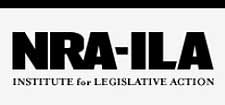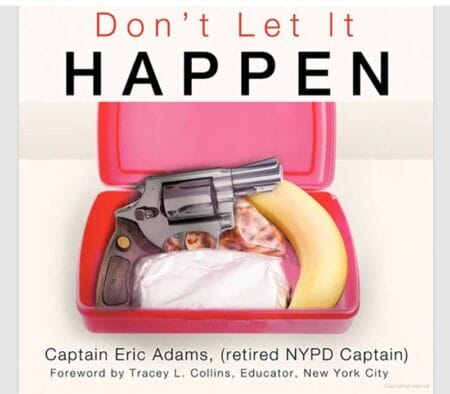Opinion

Americans own guns. They’ve always owned guns, even before they were officially Americans. The British subjects who lived on this continent back in the 18th Century eventually used their guns to help expel British soldiers and establish what would become the greatest nation the world has ever known.
And what makes America great is that our nation was founded, in part, on the premise of recognizing inalienable rights, and enshrining them in the documents that ensure our government operates in a manner that does not encroach on those protected freedoms.
Among those freedoms, of course, is the right to arms, and as previously noted, Americans (even when they were still British) always embraced that right.
Many years ago, however, one man tried to rewrite our nation’s history, and suggested that early Americans did not, in fact, own many guns.
He argued that Americans didn’t actually begin owning firearms on a large scale until around the time of the Civil War.
This Emory University professor, Michael Bellesiles, was briefly the darling of anti-gun extremists who all wanted to believe his ridiculous premise that none bothered to ask why his “research” flew in the face of common understanding.
The Bellesiles love affair even came with one of the most prestigious awards for writings on American history; The Bancroft Prize, which has been awarded by Columbia University since 1948. There are 16 past recipients who were also awarded the Pulitzer Prize for History, so it carries with it quite a bit of clout.
There was one small problem. The whole premise was wrong, and, upon closer scrutiny, his “research” was deeply flawed—if not completely made up.
While we will not delve into the myriad criticisms of Bellesiles’ work—many readers are likely painfully aware of this scandal—those interested in revisiting this embarrassing episode can find just some of the work done to discredit his book, along with the aftermath, here, here, here, here, here, here, and here.
In the end, The Bancroft Prize was rescinded (the only time that has ever happened), Bellesiles resigned from Emory, and a number of prominent historians who had initially praised the work began backtracking, with one referring to the book as “a fraud,” and another calling Bellesiles “a liar and a disgrace to my profession.”
Nearly a quarter-century removed from the Bellesiles scandal, a new “researcher” has come forward with a new premise.
Megan Kang, a PhD candidate in sociology at Princeton University, apparently believes that America’s “gun culture” only really developed from the mid-20th century onward.
So, unlike Bellesiles before her—who tried to convince people Americans were not very well armed until the mid-19th century—Kang seems to be implying we were not very well armed until 100 years later. She is careful not to actually say that, as there isn’t a shred of evidence to support such Bellesilian nonsense, so she uses a vague, undefinable term like “gun culture,” and posits that it has undergone a dramatic change.
It should be noted that Kang clearly doesn’t like the idea of Americans keeping or bearing arms. Her essay promoting her “research” is titled “Why America Fell for Guns,” which seems to imply we were tricked into possessing them at a higher rate than other countries. She claims that law-abiding citizens acquiring firearms for self-defense “makes everyone less safe.” She appears to lament the idea of firearms being “used (she likely means carried for personal protection) in shared spaces (i.e., public) of learning, worship and leisure.” She writes appreciatively about the “commonsense gun regulations” in Australia, Canada, and the United Kingdom—specifically noting widespread gun bans (which came with turn-ins and confiscations), licensing, and registration. And she uses terms commonly used by anti-gun extremists, such as “ghost guns,” “military-grade automatic weapons,” and the aforementioned term “commonsense gun regulations.”
She has even adopted the latest lie that is all the rage in anti-gun circles, claiming “guns are known to be the leading cause of child and adolescent death.” Anti-gun advocates have been lying for years about children and firearms—generally by including among “children” young adults aged 18 and 19, and sometimes older—and even the Washington Post has called them out on their claims. Perhaps Kang thought she was being clever by using the term “adolescent” to make her claim at least somewhat accurate. But she apparently didn’t know that the cut-off for an “adolescent” is, from a legal perspective, the age of majority, which is 18 in the U.S.
So, her claim remains as much a lie as when it is made by others in the anti-gun circles she clearly inhabits.
In other words, an anti-gun student looked for a way to promote her anti-gun views, so she wrote an anti-gun paper. Then she did a really poor job of supporting her premise.
She claims that “a gun-filled country was neither innate nor inevitable.” She then cites “research” by a number of her fellow anti-gun “scholars” that rejects her hypothesis.
In one—a 2023 article that questions the conclusions and validity of the Bruen decision—Brian DeLay of UC Berkely School of Law concedes, “…British North Americans were unusually well-armed.”
Sounds pretty “innate.”
She mentions Andrew McKevitt, an anti-gun “historian” who wrote a book about the availability of surplus firearms after WWII who then tried to claim that this era was “how America became the gun country.” McKevitt’s book to which she refers doesn’t even seem to contradict that Americans have always owned a lot of guns, it just suggests that they bought more during one time period he identified. What McKevitt appears to do is invent his own definition of American “gun culture”—something that seems to be a common trend among the anti-gun crowd these days—then claim his version was created and developed after WWII. Again, Americans have always owned guns, and generally at a higher rate than other countries. The suggestion that certain periods in our history saw growth, sometimes dramatic growth, in the firearms owned by law-abiding Americans will never change the fact that Americans have always owned plenty of firearms.
Quite simply, gun ownership in America has always been “innate.”
Grasping at McKevitt’s premise, Kang’s article claims importers of surplus firearms created “a mass market for civilian guns that had limited practical use elsewhere,” completely ignoring the “practical” use of firearms for self-defense, not to mention hunting, target shooting, and collecting. She dramatically proclaims that advertisements promote selling guns that are “the finest made by the Fascists. Carried by the crack Italian Alpine Troops.” To drive that point home, an old advertisement that contains that very language is included.
The only problem is, the ad is from the Lytle Novelty (emphasis added) Company, and is for toy replicas, with a clear message that states the items are “Absolutely Safe! Cannot Be Fired.”
In addition, her “research” trying to show Americans only began owning large numbers of firearms during the mid-20th century only goes back to 1949. While it is certainly true that from 1949 until today Americans have bought many firearms, there is no data available to show how many were bought or owned prior to 1949.
To put a finer point on the fact that a large percentage of Americans have always owned guns, the “research” by DeLay that Kang cites notes probate records in colonial America showed perhaps greater levels of gun ownership than today. He reports firearms being present in roughly 70% of colonial New England probate records, and around the same for Virginia. The lowest mark he shows for colonial probate records including firearms is around 30%; again, it sounds like gun ownership in America was, and is, indeed “innate.”
To cap things off, this Op-Ed masquerading as research makes a couple glaringly misleading claims near its conclusion, further exposing the author’s anti-gun agenda and deeply flawed “research.” First, Kang claims, “By the 1990s, unprecedented crime rates prompted many US states to adopt gun restrictions that resulted in a substantial reduction in gun availability and saved tens of thousands of lives.” To support this claim, she cites another “research” paper she wrote; one in which she goes even further to claim that “most (emphasis added) US states implemented more restrictive gun laws.” She also claims in the paper that “the United States experienced a decline in household gun ownership.”
Neither claim is even remotely supported; except, perhaps, by Kang’s own “research.”
First, “most US states” did not impose more restrictions during the noted time period. Most readers are aware that gun laws in many states were actually made less restrictive over that time. The Right-to-Carry (RTC) movement began in Florida, in 1987, when the state made it far easier for law-abiding residents of the state to legally carry firearms for self-defense. By 1996, more than 20 states had enacted similar laws; some going from may-issue systems to shall-issue, and others going from no-issue to shall-issue.
Along with the push for RTC laws that NRA promoted came many other laws intended to make gun laws less restrictive, as well as countless successful efforts to defeat the passage of anti-gun laws. Contrary to Kang’s assertion, the time period she cites was known for making gun laws far less restrictive. Reducing limitations on law-abiding gun owners had far more to do with lowering crime rates—including homicide rates—than the mythical limitations she imagines were imposed.
Any “reduction in gun availability” or “decline in household gun ownership” are merely figments in her fevered, anti-gun imagination.
The other glaringly misleading claim made by Kang is when she states, presumably referring to the post 1991-2016 time period she selected, “Some states have eased or repealed laws, and in 2022 the US Supreme Court limited states’ ability to restrict gun access. This has likely contributed to the recent surge in firearm deaths, particularly among Black Americans.”
To support the claim, she cites one relatively obscure paper written in 2018 that discusses the changing of one law in one state. That change, which eliminated Missouri’s law requiring a permit to purchase a handgun, took place in 2007, when Kang says states were making laws more restrictive. Repealing the law, of course, had no impact on the National Instant Criminal Background Check System (NICS) that covers the purchase of all firearms from gun dealers in all states, including Missouri.
Somehow, Kang was able to contort one study that stopped looking at data after 2013 in one state and determine that, not only was the repeal of any other anti-gun law in any other state at any other time after 2016 somehow something that “contributed to the recent surge in firearm deaths, particularly among Black Americans,” but the same can be said about the 2022 Bruen decision; in spite of the fact that violent crime has actually decreased nationwide since the Supreme Court decided Bruen.
Ultimately, Kang’s anti-gun vitriol and questionable “research” reveal her as yet another gun ban advocate who will use her alleged status as a “scholar” to promote attacks on law-abiding gun owners and the Second Amendment. She might have saved herself a lot of time if she had simply written, “I don’t like guns, and I don’t think Americans should own them.” It would make just as much sense, and have just as much validity, as her Op-Ed.
About NRA-ILA:
Established in 1975, the Institute for Legislative Action (ILA) is the “lobbying” arm of the National Rifle Association of America. ILA is responsible for preserving the right of all law-abiding individuals in the legislative, political, and legal arenas, to purchase, possess, and use firearms for legitimate purposes as guaranteed by the Second Amendment to the U.S. Constitution. Visit: www.nra.org








Do these people get their PhD’s from vending machines or mail order diploma mills?
How does the Bruen decision led to more gun deaths when the states (and big cities) that were violating the constitution are still still doing everything they can to deny people their rights? I guess it has nothing to do with cutting police, releasing dangerous people from prison and not fully prosecuting criminals. How many woke/ progressive AG’s and DA’s promising equity and restorative justice have been elected the last couple of cycles?
The PhD thesis/dissertation is written to justify her advisor’s point of vies, and her own. A thesis extolling firearms would have very little. Chance of being accepted. Consider the source.
Wasn’t she supposed to start her Fairy Tale book with “Once upon a time”?
“I prefer my fiction to be more believable.”
I thought ‘Klang’ was a fictional Klingon character created by the late Gene Roddenberry. This ‘Klang’ seems to be a ‘Cling On.’ Also known as a ‘Dingle Berry’.
The Left has been rewriting history since the end of WWII in order to advance their Anti-American, anti-freedom agenda. Sadly, they have been quite successful.
Megan has a BA in history from UC Berkeley so I am disappointed in the decline from 1960’s to today in US history courses there. I took upper division US history in 66-67 that covered the period from 1600 through 1967. I did this to fulfill non engineering education requirement for BSEE degree. Her only excuse for her bogus scholarship is her history course work was world or ancient history. The European colonizers would have been driven out by the native inhabitants wo/firearms. Also until the 20th century the low density of population west of Mississippi river meant that the… Read more »
Hacks will hack….
“Who controls the past, controls the future…”
I’d opine that her PHd isn’t worth the paper it’s printed upon. Her bias contradicts the scientific process. She is a disgrace.
It’s hypocritical of the author to criticize Kang’s choice of references and then proceed to cite an NPR story that praises Biden for reduced crime numbers which in turn uses statistics from the new FBI reporting scheme that has half the police agencies in the country boycotting it.
It’s easy to show a drop in crime if you’re using 2020-21 as the comparison. A scheme guaranteed to skew the numbers doesn’t help either.